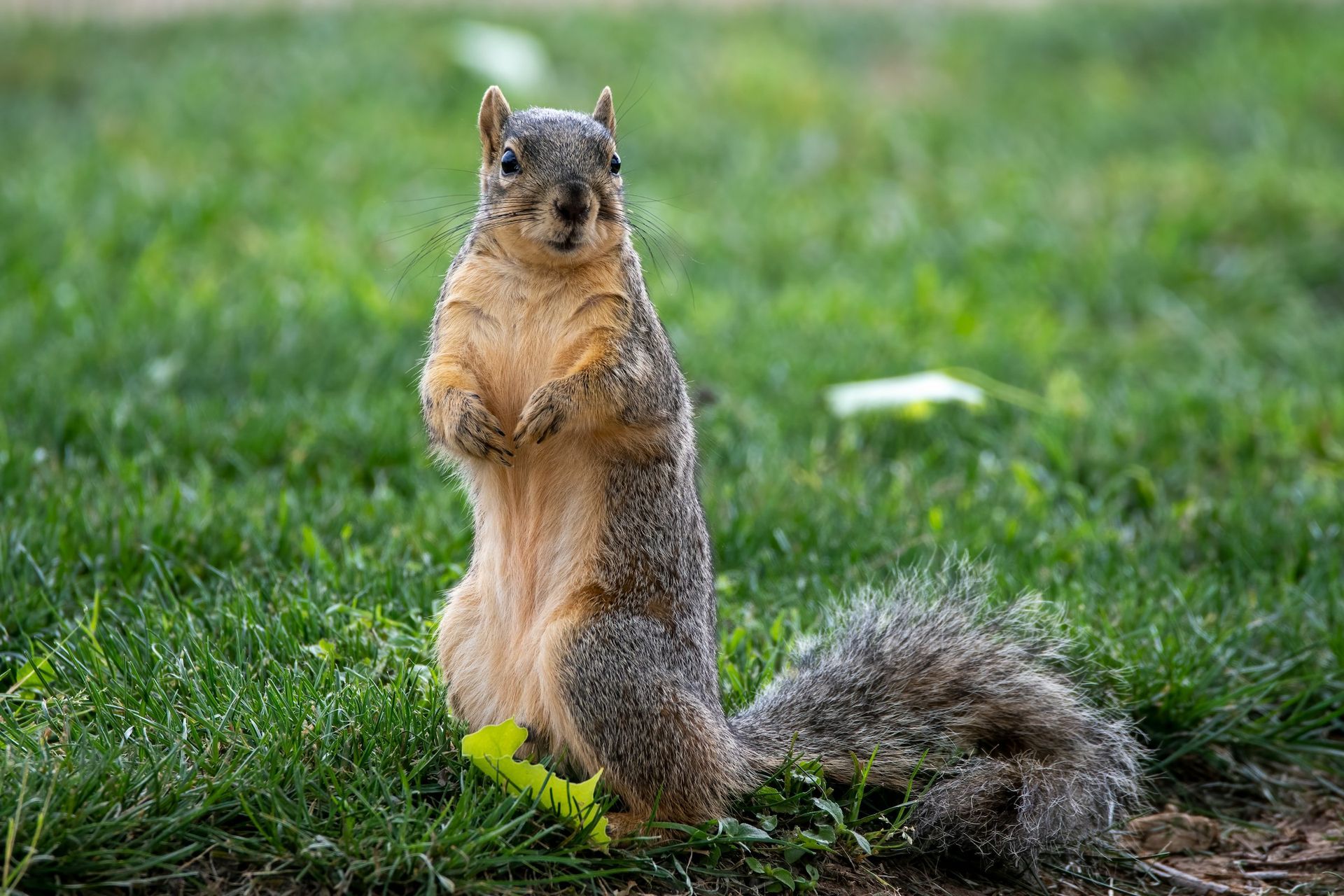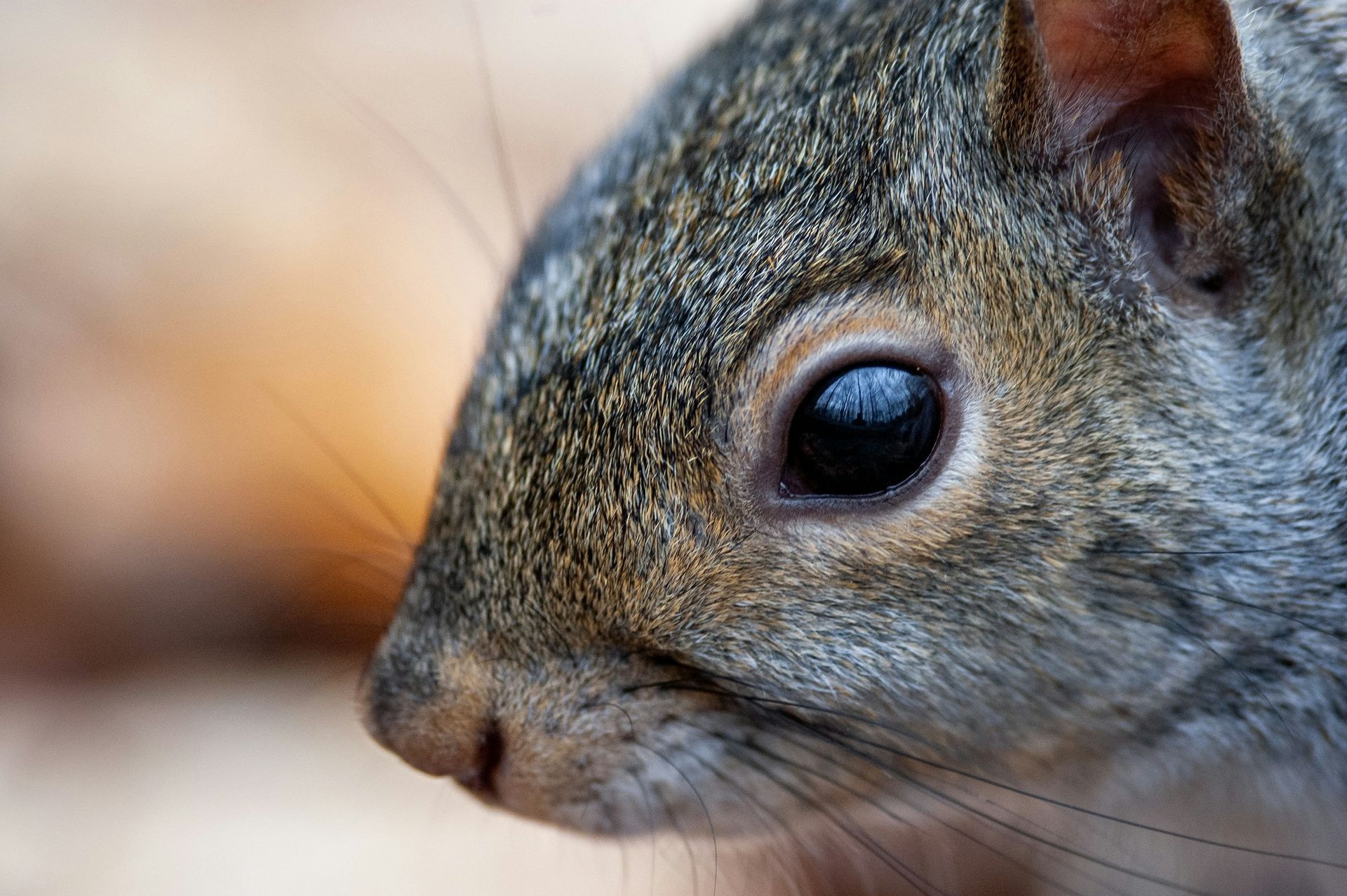Squirrels are small to medium-sized rodents known for their bushy tails, agility, and habit of caching food for winter. Found in forests, parks, and urban areas, squirrels play an important role in ecosystems by dispersing seeds and helping regenerate forests. Common species in North America include the Eastern Gray Squirrel and the Western Gray Squirrel.
Squirrels typically measure 9-20 inches in length and weigh between 1-2 pounds. Their fur varies in color from gray and brown to red, depending on the species. Squirrels are primarily herbivores, feeding on nuts, seeds, fruits, and bark, though they occasionally eat insects and small vertebrates.
These diurnal animals are excellent climbers and are often seen darting through tree branches. During the breeding season, females give birth to litters of 2-8 young in tree cavities or leaf nests. Young squirrels stay with their mothers for several months before becoming independent.
Natural predators include hawks, owls, snakes, and foxes. Human-related threats such as vehicle collisions, habitat loss, and poisoning also affect squirrel populations. Despite these challenges, squirrels are highly adaptable and have successfully thrived in urban environments.

For your safety and the well-being of wildlife, please observe animals from a distance and avoid touching or disturbing them. If you encounter an animal that appears injured or in distress, contact a licensed wildlife rescue organization for guidance before intervening.
Found An Animal? Not sure how to help a wild animal in need? Learn when to step in, who to call, and how to help safely.
Did You Know?
- The average adult squirrel needs about a pound of food per week.
- They are known for their acrobatic abilities, capable of leaping up to 10 feet between tree branches.
- Squirrels help forest regeneration by forgetting some of the nuts they bury, which grow into new trees.
- Squirrels have four front teeth that grow continuously, at a rate of about six inches per year. This helps their incisors endure the constant gnawing.
- Squirrels can rotate their ankles 180 degrees, allowing them to climb down trees headfirst.
- Red Squirrels are highly territorial and will chase away other squirrels from their food caches.
- Squirrels use a variety of vocalizations and tail movements to communicate with each other.
- Flying squirrels, despite their name, glide rather than fly, using flaps of skin to travel between trees.
- During the winter, some ground squirrels hibernate, while tree squirrels remain active and rely on stored food.
Problems Faced In The Wild
- Habitat Loss: Urban development reduces available nesting sites and food sources.
- Vehicle Collisions: Squirrels are frequently struck by cars while crossing roads.
- Predation: Hawks, owls, and domestic cats are significant predators.
- Climate Change: Altered weather patterns can impact food availability.
- Poisoning: Rodenticides and pesticides can harm squirrels directly or indirectly.
- Human-Wildlife Conflict: Squirrels are sometimes considered pests when they nest in attics or damage gardens.
Tips For Cohabitation
- Preserve Native Trees: Provide natural shelter and food sources.
- Avoid Using Poisons: Choose humane pest control methods to protect squirrels and other wildlife.
- Install Squirrel Guards: Protect bird feeders and gardens from foraging squirrels.
- Drive Carefully: Be mindful of squirrels crossing roads, especially in wooded areas.
- Provide Fresh Water: Create a water source for squirrels and other wildlife in your yard.
- Educate Others: Share the ecological importance of squirrels in seed dispersal and forest regeneration.



